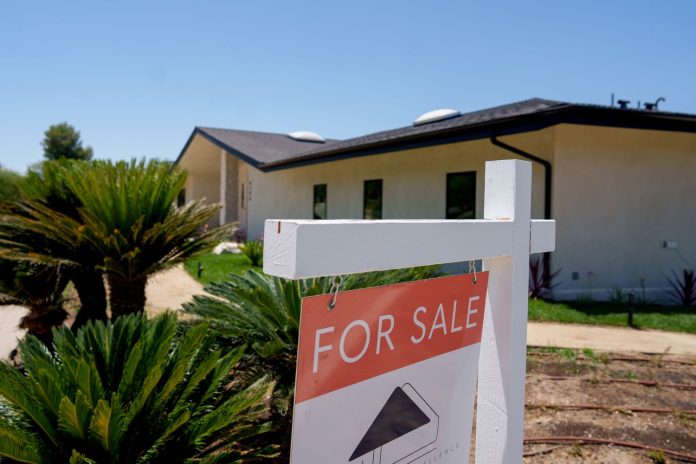A Roadmap to Affordable Housing: What You Need to Know
The housing market has been a rollercoaster ride in recent years. Rising home prices and sky-high mortgage rates have put homeownership further out of reach for many. But a recent report by Redfin suggests there’s hope on the horizon. With some moderate changes, we might see a path back to more normal housing costs—possibly by the end of the decade. Let’s dive into what this means for homebuyers, the implications for the housing market, and how it connects to your own home-buying journey.
Key Insights About the Market Today
Before we get into the nitty-gritty, here are some crucial points to keep in mind:
- The Current Landscape: Mortgage rates range between 6% and 6.7%, which is causing many potential buyers to hold off on purchasing homes.
- Potential for Change: If mortgage rates drop to around 5.5% by 2030, the median home could be as affordable as it was back in 2018, provided that home prices and incomes grow steadily.
- Metropolitan Variability: Major cities might take even longer to reach these affordability levels, despite any optimism expressed in reports.
These insights set the stage for understanding how we got here and where we may be heading.
What Does “Normal” Even Mean?
You’ve probably heard the recommendation that your monthly housing costs—be it rent or mortgage—should remain under 30% of your gross income. This “30% rule” has been a long-standing guideline for determining housing affordability.
Redfin chose July 2018 as their reference point for what “normal” looks like, based on a time when mortgage rates hovered just above 4%. Back then, the balance between buyers and sellers was fairly stable, and home prices weren’t escalating at the breakneck speeds we witness today.
Why look back to 2018? It provides a benchmark to understand just how far we’ve strayed from affordability and what could be on the horizon.
The Timeline for Housing Affordability
According to Redfin’s report, returning to a “normal” housing market doesn’t necessarily require a crash—it could just need some stability. As Asad Khan, Redfin’s senior economist, mentions, we shouldn’t expect this change to happen overnight. If mortgage rates fall and income levels rise steadily, there may be real progress by the late 2020s.
Redfin’s analysis relied on two key scenarios: maintaining current mortgage rates around 6.7% or dropping to a more manageable 5.5%. Here’s the scoop on when we might see affordability restored:
- If mortgage rates fall to 5.5%:
- Home prices decrease: November 2027
- Home prices remain flat: January 2029
- Home prices grow at the current rate: November 2030
But if home prices increase faster than expected, it could push the timeline back even further. That means if prices soar, we might not see affordability until July 2032. Ouch!
Conversely, if mortgage rates remain high, the timeline extends even more dramatically, making it potentially impossible for many to enter the housing market.
The Cities That are Lagging Behind
Here’s where things get interesting. Redfin projects that only 16 out of the 50 largest U.S. metro areas will return to their 2018 “normal” affordability levels by 2030 if mortgage rates drop to 5.5%. If the rates stay around 6.7%, that number drops to just 11 cities.
For example, San Francisco has already seen its housing affordability return to pre-2018 levels. However, with a median home price of about $1.5 million, this is a far cry from the 30% standard. Here, a median household would need to allocate nearly two-thirds of its income just to afford a home.
But it doesn’t stop there. Many cities in the Midwest and East Coast, like Boston, Chicago, Minneapolis, and Cleveland, also struggle to reach affordability, even if mortgage rates drop. This paints an even bleaker picture in those markets.
The Bottom Line: What’s Next?
While it’s clear that housing affordability isn’t going to bounce back quickly, the report shows that there’s hope for improvement by the end of the decade. If household incomes continue to rise and mortgage rates ease up, we might find ourselves in a situation where homeownership feels like a reality instead of a fantasy.
However, there’s a critical lesson here. Timing and location will be key factors in deciding where and when to buy. Cities that typically have higher demands for housing may lag behind national averages, making homeownership a distant dream for many residents.
Personal Analysis: Why This Matters
As someone who has experienced the ups and downs of the housing market myself, I can appreciate how worrying it can be to think about homeownership. The report resonates with me on a personal level, and I find it helps to frame the problem more clearly.
Seeing these trends doesn’t just inform strategic buying decisions; it nurtures hope. It’s encouraging to know that while the situation might be tough, an upward trajectory is possible. It teaches us patience and adaptability.
Navigating this landscape isn’t just about finding a house. It’s about planning for life as a whole—where you envision your future, how much you’re willing to invest, and the timeframe you’re looking at.
Moreover, understanding market dynamics can empower you. Knowledge is power! If you know the markers to look out for, you can better position yourself in this market—whether you decide to buy now or wait for more favorable conditions.
Final Thoughts
The housing market may seem daunting, but knowing the factors at play helps you stay informed and prepared. As we move closer to 2030, keep an eye on interest rates and personal income growth. While affordable housing may feel like an uphill battle right now, with the right knowledge and strategic timing, that dream can slowly turn into a reality.
Stay hopeful and proactive; you never know when the perfect opportunity will come knocking at your door!

